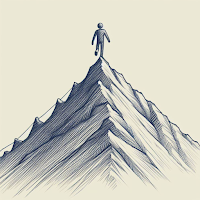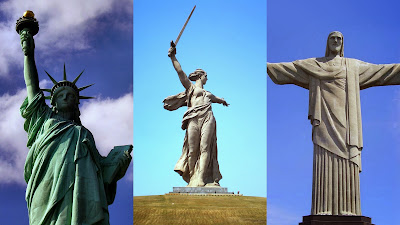What limit is 'the limit'?
Rules, they are everywhere. There are rules to govern, there are rules to ensure safety, there are rules to make your life easier and sometimes there are rules that don't serve any real purpose. They just annoy you. Recently in my college, a rule was made that boys wearing shorts with length lesser than knee length cannot enter Girls' hostels. That day I found myself in a funny situation. I thought my shorts were knee length, but the guard at the gate thought they were shorter and wouldn't let me in. While arguing with him over what length would safely cover knee length, several questions popped up in my mind. What limit is 'the' limit? How much is too much? Or more generally, how strictly should a rule be implemented?
Everyone must have at some point in their life gone through situations where you strongly feel that life would be easier if rules are bent a little bit. Remember that line at a bank counter. Bank's lunch time is fast approaching and right when it's time, you find yourself at the counter, looking at the cashier packing his stuff. You plead with him to do your work because you are the only person left and you don't want to wait for another hour because you've already waited long enough. Or remember that moment when police van picks up your bike from a no-parking zone. You know parking there is wrong but can't help as you have an urgent work and you'll be back in less than a minute.
In Delhi rape case that rocked the nation, accused juvenile slipped off with just three years in reform home despite having same charges as that of other accused adults. Much debate ensued with some calling for reduction in age limit for juveniles. But if you think of it, what age limit would really bring the justice that everyone wants to see? Would the change in age limit be still relevant in cases other than rape? In dealing with sex crimes, the term juvenile is very obscure. In males, sexual awareness comes a lot earlier, around the age of 14-15 and a serious sense of moral, social responsibility comes a lot later, around 20-21. There are so many fuzzy possibilities that changing age limit won't really solve the problem. But what would really solve it is increasing the maximum possible punishment for juveniles and then judging on the basis of brutality of the crime, as many others argued, but to no avail. So final verdict meant that even though the accused was almost 18, he had to be tried in juvenile court and had to be let go softly compared to other accused. The hard threshold of 18 spoiled hopes of many who waited for justice. Without judging right or wrong, the point here is that rigid rules may not mean well of everyone.
Court trials place most of their fates in the hands of lawyers and judges who research cases and draw conclusions. It's all work of the human brain. But there are cases, cases in fields other than law where process of judging may be done much more accurately than a human brain, by using machines or more specifically, machine intelligence. Take for instance, the Decision Review System (DRS) in game of cricket. In cricket, a batsman is given out Leg-before-wicket (LBW) if his body blocks a ball which can possibly go further and hit stumps. DRS can predict flight path of the ball and can tell whether the ball will hit stumps or not. DRS can sense if a ball really touched bat or not. This system is used when an umpire's decision is to be reviewed. Some technical snags aside, DRS is an intelligent machine that takes calls on the basis of hard thresholds. But then why aren't human umpires replaced with DRS? There are some borderline cases where DRS results are deemed as too 'theoretical', 'a work of machine', to be true in practical world. In such inconclusive cases, the onus of taking decision goes back to the umpire because an on-field umpire is deemed as the best judge of many minute factors like wind, dew on the field and hardness of the pitch.
Whether umpires should be replaced by DRS or not is a debatable issue as both can do the given task. But what if machines can do something that humans can't? Plagiarism, copying someone else's work to pass off as own work, is a big issue in fields requiring creative work, more so in scientific research. While publishing research articles, even if due credit is given to its original authors, copying lines as they are, still counts as plagiarism. For a human, checking an article and finding out how much it copies from other articles is a near impossible task. But there are many tools available, both offline and online, that can compare an article with a vast database of other articles. After comparing, such tools generate a similarity score which is the extent of copy in a given article. The similarity scores often help in initial screening of research articles and in rejecting articles with very high similarity score. But there are cases where a closer inspection is needed. Equations can have same symbols as used in other papers or titles of figures can be similar to those in other papers. Articles in such cases can be genuine even if their similarity scores generated by the tool are high. So human discretion matters and similarity scores alone cannot be used as thresholds.
Machines do things much more accurately than humans and they do it faster too. But then why this emphasis on humans taking most crucial calls? We gather vast experience from our surroundings as we grow up. When it comes to implementing rules, we believe that with our experience we are able to judge a situation better and thus are better at handling it. Machines may simplify it and break it down for you in black and white but humans possess something that machines don't; empathy, the ability to be considerate; it gives us the flexibility in actions we often need. So coming back to the main question, how much is too much? What limit is 'the limit'? The answer is, we don't know. And the truth is we don't want to know. The suspense gives us something to hope. We are better off in the vagueness of it.


Comments
Post a Comment